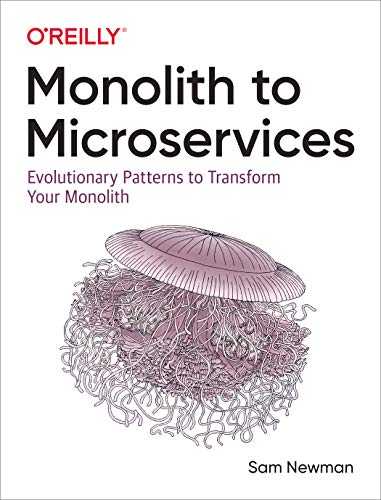Monolith to Microservices — Book Notes, Summary and Top Ideas in 2026
Last updated: Jan 29, 2026
“Monolith to Microservices: Evolutionary Patterns to Transform Your Monolith” by Sam Newman is a book that explores the journey of transforming monolithic applications into microservices architectures. Here is a summary of the key concepts and ideas covered in the book.
The book begins by discussing the challenges faced by organizations with monolithic applications, such as scalability limitations, deployment difficulties, and development bottlenecks. It emphasizes the need for a more modular and flexible approach, which can be achieved through the adoption of microservices.
The author introduces the concept of microservices as an architectural style where applications are built as a suite of small, loosely coupled services, each running in its own process and communicating with lightweight mechanisms. He explains that by breaking down a monolithic application into smaller, more manageable services, organizations can achieve improved scalability, agility, and maintainability.
Next, the book delves into various strategies for decomposing a monolithic application into microservices. It emphasizes the importance of identifying appropriate service boundaries based on business capabilities and bounded contexts. The author discusses different decomposition techniques such as domain-driven design, anti-corruption layers, and strangler patterns. He provides practical advice on how to analyze existing systems, identify potential service boundaries, and plan the migration process.
The author emphasizes the significance of proper service design and the use of well-defined interfaces for effective microservice communication. He explores various communication mechanisms, including synchronous HTTP/REST, asynchronous messaging with tools like Apache Kafka or RabbitMQ, and event-driven architectures. The book highlights the pros and cons of each approach and provides guidance on choosing the right communication patterns based on specific requirements.
A crucial aspect of microservices is the need for decentralized data management. The book addresses data consistency challenges and explores different strategies for managing data in a distributed environment. The author introduces concepts like database per service, polyglot persistence, and event sourcing. He explains how these patterns can help achieve data autonomy and improve the overall resilience and scalability of the system.
The book also covers important topics related to deploying and managing microservices. It discusses containerization technologies like Docker and container orchestration platforms such as Kubernetes. The author explains how containerization can simplify the deployment process and enable scalability and fault tolerance. He provides insights into deploying microservices on platforms like AWS, Azure, and Google Cloud.
Additionally, the book addresses the challenges of monitoring, logging, and troubleshooting in a microservices architecture. It emphasizes the need for observability and introduces tools and techniques for distributed tracing, log aggregation, and metrics collection. The author stresses the importance of building a culture of monitoring and continuous improvement to ensure the reliability and performance of microservices.
To ensure the success of microservices adoption, the book explores organizational and cultural aspects. It discusses the impact of microservices on team structure, communication, and collaboration. The author highlights the importance of autonomous teams and cross-functional collaboration for the successful development and operation of microservices.
In conclusion, “Monolith to Microservices: Evolutionary Patterns to Transform Your Monolith” provides a comprehensive guide to migrating from monolithic applications to microservices architectures. The book covers various strategies, patterns, and best practices for successfully decomposing monoliths, designing microservices, managing data, deploying containers, monitoring, and fostering an effective organizational culture. By following the principles outlined in the book, organizations can achieve greater scalability, agility, and maintainability in their software systems.

